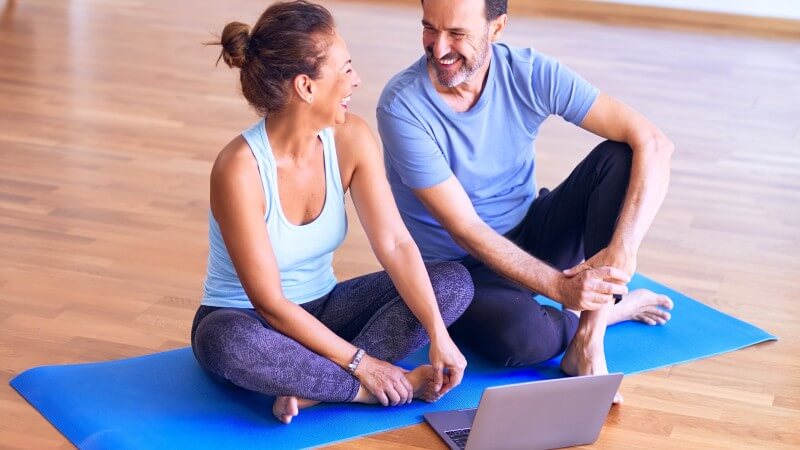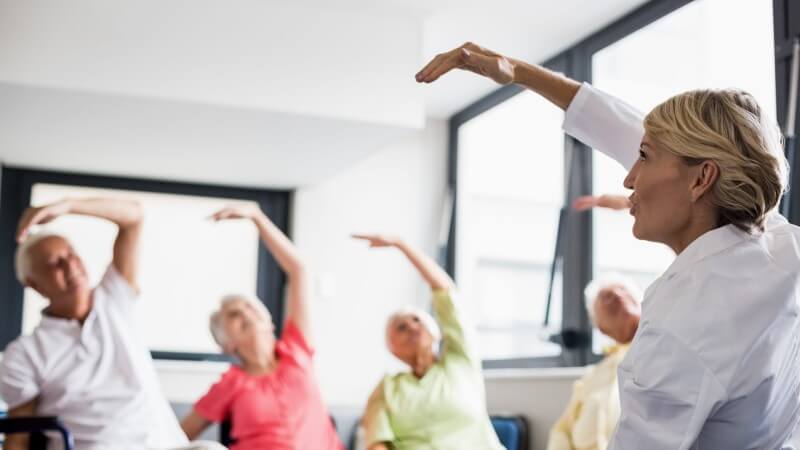Zumba For Seniors in Wheelchairs: The Joy of Movement
Zumba, a dance fitness program that has taken the world by storm, is not just for the young and agile. It’s a universal language of rhythm and movement that everyone, including seniors in wheelchairs, can enjoy. The beauty of Zumba lies in its adaptability, allowing everyone to experience the joy of dancing, regardless of physical limitations.

The Benefits of Zumba for Seniors
Zumba has many benefits for older adults, including:
- Improved cardiovascular health
- Increased strength and flexibility
- Reduced risk of falls
- Improved balance and coordination
- Increased bone density
- Reduced stress and anxiety
- Improved mood and self-esteem
Adapting Zumba for Wheelchair Users

1. Understand the Basics of Zumba
Before adapting Zumba for wheelchair users, it’s essential to understand the core principles of Zumba. Zumba is a dance fitness program that combines Latin and international music with dance moves. The primary goal is to provide an effective workout in a fun, dance-party atmosphere.
2. Focus on Upper Body Movements
For wheelchair users, the emphasis should be on the upper body. This includes:
- Arm Movements: Incorporate a range of arm movements, from simple side-to-side swings to more complex patterns that mimic traditional dance steps.
- Shoulder Shimmies: These can be a fun way to engage the upper body and add flair to the routine.
- Torso Twists: Ensure the wheelchair user has adequate core strength and balance before incorporating these.
3. Incorporate Wheelchair Movements
The wheelchair can become an integral part of the dance routine:
- Spins and Turns: Use the wheelchair’s ability to spin and turn to add dynamic movements to the dance.
- Rolls: Move forward and backward in rhythm with the music.
- Tilts: With assistance or if the user has a specialized wheelchair, tilting can add a dramatic flair to the routine.
4. Use of Props
Props can enhance the Zumba experience and provide additional ways to engage with the music:
- Hand-held Instruments: Maracas, tambourines, or clappers can keep a rhythm and add an auditory element to the routine.
- Scarves: Flowing scarves can be waved, twirled, or swung to the music, adding a visual element to the dance.
5. Modify the Music and Pace
Choose music that resonates with the participants and is suitable for the pace of the adapted routine. Slower songs might be more appropriate initially, allowing participants to get used to the movements without feeling rushed.
6. Ensure Safety
Safety is paramount:
- Stable Wheelchairs: Ensure that the wheelchair is stable, with functioning brakes. Consider using wheel locks during stationary movements.
- Space: Ensure enough space for movement, especially if multiple wheelchair users participate.
- Hydration: Dancing can be strenuous. Ensure participants have access to water and take regular breaks.
7. Collaborate with Participants
Every wheelchair user will have unique abilities and limitations. Collaborate with them to understand their comfort levels and adapt the routine accordingly. This ensures a personalized and enjoyable experience.
8. Continuous Learning and Adaptation
As with any fitness program, continuous learning and adaptation are crucial. Regularly seek participant feedback and be open to making changes to the routine based on their input.
Finding the Right Class
Not all Zumba classes are the same. It’s essential to find an instructor who is experienced in teaching seniors and understands the unique needs of wheelchair users. Here are some tips:

- Look for classes labeled “Zumba Gold” or “Adaptive Zumba.” These are tailored for seniors and those with physical limitations.
- Speak to the instructor beforehand. Discuss any specific needs or concerns to ensure a positive experience.
- Consider starting with online classes. Many instructors offer virtual sessions, allowing seniors to experience Zumba from the comfort of their homes.
Tips for Getting Started with Zumba
If you’re new to Zumba, here are a few tips to help you get started:
- Start slowly and gradually increase the intensity of your workouts.
- Wear comfortable clothing and shoes.
- Drink plenty of water before, during, and after your workouts.
- Most importantly, have fun!

Additional Tips:
- Find a supportive instructor. A good Zumba instructor will be patient and understanding, and they will be able to help you modify the moves as needed.
- Don’t be afraid to ask for help. If you’re unsure how to move, ask your instructor for help. They’re there to make sure you have a safe and enjoyable experience.
- Modify the moves as needed. Don’t be afraid to modify the moves to make them more accessible. There is no right or wrong way to do Zumba if you’re having fun and getting moving.
- Listen to your body. If you need to take a break, take it. Don’t push yourself too hard.
Sample Zumba Workout for Seniors in Wheelchairs
Here is a sample Zumba workout for seniors in wheelchairs:
1. Warm-up
- Arm circles: Move your arms in small circles, forward and backward.
- Leg swings: Swing your legs back and forth, one leg at a time.
- Chair twists: Turn your torso from side to side while keeping your feet planted.
2. Workout
- Marcha: Sit in your wheelchair and march your feet in place.
- Samba: Move your hips from side to side while keeping your feet planted.
- Cha-cha: Step forward with one foot and then back with the other while swinging your arms back and forth.
- Rumba: Step to the side with one foot and then back to the center while swinging your arms back and forth.
- Mambo: Step forward with one foot and then back with the other while swinging your hips from side to side.
3. Cool-down
- Arm circles: Move your arms in small circles, forward and backward.
- Leg swings: Swing your legs back and forth, one leg at a time.
- Chair twists: Turn your torso from side to side while keeping your feet planted.
You can repeat this circuit as many times as you like. Be sure to listen to your body and take breaks when needed.
FAQs
Can Zumba help improve the cardiovascular health of seniors in wheelchairs?
Yes, Zumba can enhance cardiovascular health for seniors in wheelchairs. The rhythmic upper body movements and choreography elevate the heart rate, promoting better blood circulation and cardiovascular endurance.
Are there specialized Zumba instructors for wheelchair-bound seniors?
Yes, many Zumba instructors undergo specialized training to teach adaptive Zumba classes tailored for individuals with physical limitations, including seniors in wheelchairs. Choosing an instructor with this specific training is always recommended for the best experience.
How often should a senior in a wheelchair participate in Zumba to see the benefits?
It’s generally recommended for seniors in wheelchairs to participate in Zumba 2-3 times a week. However, the frequency can vary based on individual health conditions and stamina. It’s essential to consult with a healthcare professional for personalized advice.
Can Zumba be done in group settings with both wheelchair users and non-wheelchair users?
Absolutely! Zumba is an inclusive activity. Classes can be designed to accommodate wheelchair and non-wheelchair users, ensuring everyone can enjoy the rhythm and energy of the dance together.
Are there any online resources or platforms where seniors in wheelchairs can participate in virtual Zumba classes?
Yes, many platforms offer virtual Zumba classes tailored for seniors in wheelchairs. Websites like Zumba’s official site, YouTube, and various fitness platforms often have specialized classes. It’s essential to ensure the chosen online class suits wheelchair users before participating.
Final Words: Dance Like Nobody’s Watching
Zumba for seniors in wheelchairs is more than just an exercise; it’s a celebration of life. It proves that limitations are only in the mind and that one can dance like nobody’s watching with the right attitude. So, embrace the rhythm, let go of inhibitions, and let the music take control.
